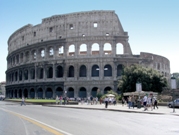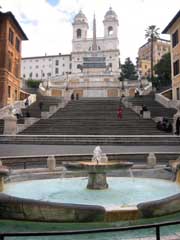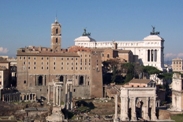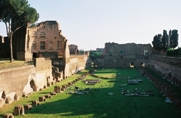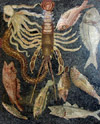
SHORE EXCURSION FROM THE PORT OF CIVITAVECCHIA TO ROME (COLISEUM, TREVI FOUNTAIN, PIAZZA DI SPAGNA)
Details
PRIVATE SHORE EXCURSION FROM THE PORT OF CIVITAVECCHIA TO ROME (Coliseum, Forum, Palatino, Fountain of Trevi, Piazza di Spagna and Piazza del Popolo)
|
DURATION: | 9 hours | |
|
PRICE: |
View the price list | |
|
AVAILABILITY: |
All-year-round | |
|
THE PRICE INCLUDES: | English-speaking Driver & Air-conditioned Mercedes Car at your disposal for 9 hours THE ENTRANCE FEES AND THE RESERVATION FOR THE COLISEUM, THE ROMAN FORUM AND THE PALATINE HILL ARE INCLUDED! | |
SCHEDULE OF THE SHORE EXCURSION TO ROME FROM CIVITAVECCHIA PORT
|
| Meet with the English-speaking driver and his Mercedes limousine (with air conditioning) by the cruise ship at the Port of Civitavecchia |
| Arrival in Rome and meet with our English-speaking expert guide at the Coliseum area |
| 3-hour guided visit of the Coliseum, Foro Romano and Palatino |
| 1 hour free time for lunch (not included in the price) |
| Pick-up with our English-speaking driver (without guide) and short drive to reach the Trevi Fountain in the centre of Rome |
| 2 hours of free time for the visit on foot of the Trevi Fountain, the Spanish steps and Piazza del Popolo (without guide) |
| Pick-up close to Piazza del Popolo and back to the Port of Civitavecchia |
You will meet our English-speaking driver by your cruiseship at the port of Civitavecchia:
COLOSSEO & PALATINO:
The Colosseum still remains the greatest architectural legacy from ancient Rome. Vespasian ordered the construction of the elliptical bowl called the Amphitheatrum Flavium in A.D. 72; it was inaugurated by Titus in A.D. 80 with a bloody combat, lasting many weeks, between gladiators and wild beasts. At its peak, under the cruel Domitian, the Colosseum could seat 50.000.
The Palatine is where Romulus killed his brother Remus and founded Rome in 753 BC. today it's a beautiful area of ruins and great views. Overlooking the Roman Forum, the Palatine was ancient Rome's poshest neighbourhood; aristocrats sought to build houses here and successive emperors built increasingly opulent palaces. But after Rome's fall, the Palatine fell into disrepair and in the Middle Ages churches and castles were built over the ruins.
TREVI FOUNTAIN:
Supplied by the water from the Acqua Vergine aqueduct and a triumph of the baroque style, it was based on the design of Nicolà Salvi (who's said to have died of illness contracted during his supervision of the project) and was completed in 1762. The design centers on the triumphant figure of Neptunus Rex, standing on a shell chariot drawn by winged steeds and led by a pair of tritons. Two allegorical figures in the side niches represent good health and fertility.
SPANISH STEPS:
The famous Spanish Steps are filled in spring with azaleas and other flowers, flower vendors, jewelry dealers, and photgraphers snapping pictures of visitors. The steps and the square (Piazza di Spagna) take their name from the Spanish Embassy, which used to be headquartered here. Designed by Italian architect Francesco De Sanctis and built from 1723 to 1725, they were funded almost entirely by the French as a preface to Trinità dei Monti at the top.
The Tour ends at Piazza del Popolo from where you’ll be picked up by our bus driver for the return to Civitavecchia.
SUGGESTIONS:
Take water, camera & sun cream; wear comfortable shoes. In low season warmer clothing may be required!
THIS TOUR WILL OPERATE RAIN OR SHINE, SO BE PREPARED FOR ALL WEATHER CONDITIONS.
OPENING HOURS OF THE COLISEUM:
- Last Sunday in March to August 31 from 9:00 to 19:30
- September, from 9:00 to 19:00
- October from 9:00 to 18:30
- From November to February 15 from 9:00 to 16:30
- From February 16 to March 15 from 9:00 to 17:00
- March 16 to last Saturday in March from 9:00 to 17:30.
OPENING HOURS OF THE ROMAN FORUM:
The Roman Forum is open daily from 8:30 to one hour before sunset (16:30 in winter, 19:15 in summer). The Forum is closed on December 25 and on the first of January.
The last entrance is one hour before the close.

